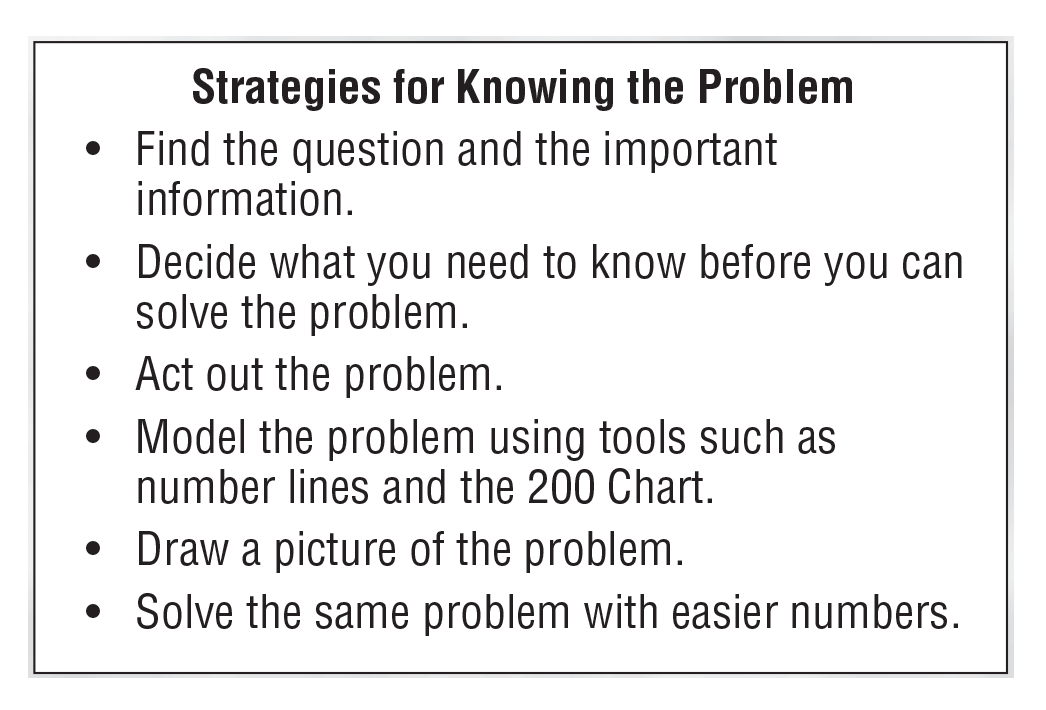Zoo Sticker Arrays
Est. Class Sessions: 2Developing the Lesson
Part 2: Solve Multistep Problems
Discuss Question 4 on the Zoo Stickers pages and create additional problems for students to solve using the display of the pages.
Ask questions such as:
Explain that some problems may have more than one step to find the solution. Ask students to recall strategies for knowing how to solve one-step word problems. In Unit 1 students developed a chart of strategies for knowing a problem [MPE1]. Record student ideas for knowing the problem for multistep problems. See Figure 3 for a sample list of strategies.
Ask student pairs to work on the Cost of Zoo Stickers pages in the Student Activity Book. Have students refer to the Math Practices page in the Student Activity Book Reference section as they solve the problems. For Questions 1–3, intermediate questions are given to help students understand what they need to solve before they answer the question in the problem. Question 4 does not have any intermediate question. Students have to figure out what they need to solve before they answer the question.
Monitor students as they work on the problems.
If some students experience difficulty solving the problems, ask questions such as the following:















